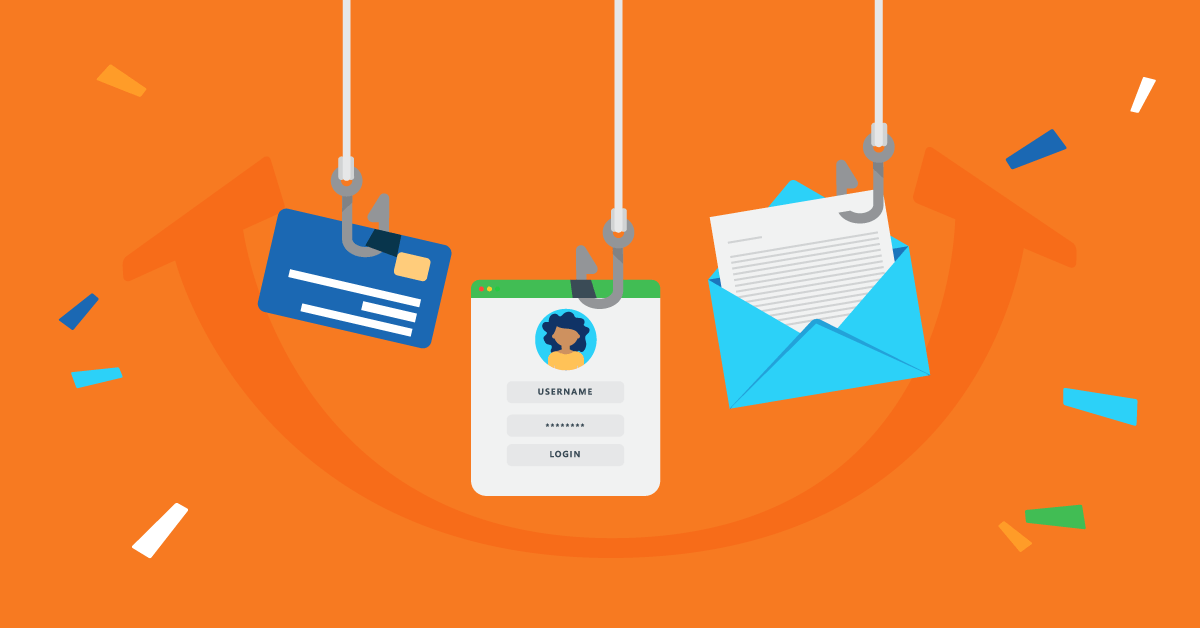“Your password will expire in 1 day(s).”
This is what Frank saw when he opened his work email on a Monday morning. He remembered that he was advised to change his password every so often, but he always postponed it. So, it made perfect sense to receive such an email.
And now what?
He was worried that he would be locked out of the tools he was using. And he was dreading the idea of admitting to his boss he forgot to change his password and then going through IT to recover it.
Luckily, this reminder saved his day. Or so he thought.
He quickly clicked on the link and entered his old and new passwords. As he was taking a breath, relieved, his computer froze. The “blue screen of death” appeared. He knew something was really wrong.
Frank was a victim of a phishing attack. And as a result, the company was at serious risk of a data breach. But it wasn’t his fault. Well, at least, not completely.
“Good employees simply want to do their jobs. They want to please their superiors, they want to help. They want to be efficient and get things done. All of this leads to being phished,” Robert Siciliano, CEO of ProtectNowLLC.com, explains.
“So, we need to train employees to think before they click,” he adds.
Phishing awareness training for employees is vital, indeed. It’s essential that you invest in securing all the sensitive data of your organization by preparing your employees accordingly. The catch is that you don’t have just to teach employees something, you need to prompt them to change their habits.
Let’s see below how you can implement phishing training in your L&D strategy and how to achieve security in your business.
What’s phishing?
Phishing is a kind of social engineering attack that steals user data, login credentials, credit card numbers, and other types of sensitive information. The attacker pretends to be a trusted entity and lures their victims into opening an email or message. Then, the victim is tricked into clicking a malicious link that installs malware and results in a data breach.
Let’s see this with another example. The attacker sends an email from a seemingly reputable credit card company, requiring account information by suggesting there’s something wrong. If users respond to this request, the attackers can use the information to access the account.
Phishing is a practice that social engineers use to access XYZ. And they do that by pretending to be other types of organizations, such as charities or project management tool companies. They frequently take advantage of current events like epidemics and health scares, holidays, economic crises, etc.
Phishing scammers often impersonate people we’re familiar with, so their requests seem legit. For example, you get an email from your CEO who asks you to share with them your login credentials for your payroll system. Sharing credentials, especially when they’re relevant to essential data, is an uncommon practice in every organization. If you’ve been trained in cybersecurity, you know that this kind of email is a scam. If you are unaware of this, then you will be subject to a phishing attack.
Why phishing awareness training matters
There were more than 300,000 attacks recorded in December 2021, meaning such incidents are becoming more and more common than any other type of threat. And in a TalentLMS and Kenna Security survey, 60% of participants said they feel safe from cybersecurity threats. Yet, they answered fewer than four questions correctly on a basic cybersecurity test.
This is why you should consider the following reasons to invest in phishing awareness training:
- cyber-attacks leave your company data exposed
- depending on your local regulations, you may be subject to fines if you don’t keep sensitive data protected
- your customers’ info and overall reputation are at risk
- you can’t be fully protected by installing antivirus software
- you need to minimize vulnerability by training your people
There’s no way to avoid such attacks by using only technical means. This is why phishing awareness training for employees must be a part of your compliance training program.
This is your chance to train and educate employees on how to identify and report anything suspicious that may come up. Then they will be able to protect themselves from scams and your company, too, from cyber-attacks, criminals, and hackers that want to access private information.

Which are the most common challenges of phishing awareness training?
The increasing number of attacks, along with the high number of employees who fail basic phishing tests, show that phishing awareness training might not be that successful. And these are some reasons this happens:
- Employees have to repeat training (at least) once a year, so it’s difficult to keep them engaged.
- It’s not just about knowing what to do, but also about actually doing it. Changing habits requires a lot of effort and time.
- Phishing awareness content can become outdated really fast.
- Employees can easily forget what they have learned since it’s not relevant to their day-to-day tasks.
How to successfully train employees on phishing awareness
Providing successful phishing awareness training to your employees is essential for maintaining the security of your company. Below we will examine some tips you should consider when creating your training strategy to engage employees during cybersecurity training but also make learning stick.
Build awareness
The first and most important step is to create awareness concerning the potential threats. Thus, your employees should know what exactly phishing is, its different types, and what it may result in on a personal and business level. This is the theory on which your training strategy will develop.
Form a familiar experts team
It’s important to have some familiar faces participate in training. For instance, if you invite external cybersecurity experts, employees won’t be able to reach out to them and ask follow-up questions if needed.
Of course, you need these familiar faces to have the necessary knowledge around cybersecurity and phishing awareness. A helpful idea is to have an internal team of “cybersecurity experts.” It could be IT employees, along with employees from other departments who are known for following cybersecurity best practices.
Often, people feel more comfortable reaching out to their peers to ask a question instead of getting in touch with the CTO, for example.
Educate through phishing simulations
It’s always great to learn by experience, but you can’t compromise safety in order to train your employees on phishing awareness. With fake phishing attacks, you can teach best practices without risking security.
By sending these managed attacks, not only do your employees get a better understanding of what these emails look like but also you gain a better sense of how people react to such instances.
It’s an eye-opening experience for both parts, so you’d really want to invest in phishing simulation training.
Create content that sticks
You need to deliver phishing awareness training content in a way that’s simple to understand but easy to retain as well. Cybersecurity training doesn’t have to be flat or dull.
The goal here is to make it engaging by leveraging gamification, real-world examples, regular tests and follow-up quizzes, and incentives. On the same note, you should make sure you offer a variety of training styles, keep sessions short, and invest in interactive content.
Meet TalentLibrary™
A growing collection of ready-made courses that cover skills like
phishing awareness, data protection, and secure remote working
![]()

After training, what?
Delivering phishing awareness training is the first step. Making it engaging is the second step. And the third, and final, step to success is reinforcing training.
It’s no use throwing phishing awareness training to your employees and just expect them to complete their sessions without taking the time to evaluate its effectiveness. You wouldn’t want to realize that the training strategy brought no results after you’ve invested time, effort, and money to provide them with all the necessary tools and knowledge to ensure the safety of your business.
This is why it’s essential to carefully plan and design the next steps after the completion of phishing awareness training.
Reward your employees instead of punishing them
Punishing employees for not taking action or failing to tackle a phishing attempt creates a negative atmosphere and leads to discouragement. Instead of pointing the finger at them, why don’t you try rewarding them?
Openly congratulate and thank employees who spot a phishing attempt so as to highlight this behavior and encourage others, as well.
Victor Kritakis, Epignosis’s CISO, says, “You need employees to feel comfortable to discuss incidents or possible security risks they detect. That is very important if you want to build a strong cybersecurity culture.”
As Victor adds, “punishment” is only applicable when an employee is not willing to comply with the company’s cybersecurity regulations. Reward, on the other hand, motivates employees and helps build a serene relationship.
“What I tried, for example, was to publicly acknowledge an employee for reporting a phishing email to me. This resulted in more and more employees being willing to do the same afterward.”
Identify high-risk employees
Find out employees who have failed the assessments, quizzes, and simulations. Or those who have performed poorly in post-training tests. Check which employees had to repeat or reinforce training with one-to-one sessions because they have scored poorly on their assessments.
These are your high-risk employees who might put security in danger and need extra assistance with their training.
Looking for an eLearning platform to identify hurdles in training?
Measure training results in no time with TalentLMS.
The training platform that users consistently rank #1.
But high-risk employees are also those who have much access to sensitive information. So, you need to reinforce cybersecurity training for those groups particularly.
“An employee’s security behaviors and how much access to information they have are going to determine their risk level. This is why it’s important to put an emphasis on training employees with access to personal, sensitive, and confidential information,” Michael Becce, President & CEO of MRB Public Relations, Inc., says.
Check whether employees can put theory into practice
It’s essential that you should not only focus on whether people understand what phishing attacks are in theory but also make sure they know what to do in case they notice one. And make it easy for them to report it (take action).
Why not incorporate a “What to do if you suspect a phishing attempt” training session where you will clarify who your employees should contact, and what actions they should take next? Being sure that your employees know what they have to do next in such a situation is key, you should never assume they know which steps they should take.
“An easily accessible, ubiquitous reporting button on the company’s intranet” is, according to Robert Siciliano, CEO of ProtectNowLLC.com, the best way to make it easier for employees to report phishing attempts.
Prepare for disaster: Recover faster
Phishing attacks are getting more and more sophisticated. It’s hard to identify them if you’re not properly trained. One careless click can cost a lot to your organization as it has the potential to damage your entire database.
No company is 100% safe from phishing attempts, but good phishing awareness training for employees can make them less vulnerable.
“Be prepared for attacks—No matter how much you train your employees, there is always a chance that they will fall for a phishing attack. Be prepared for this by having a plan in place for dealing with compromised accounts and data breaches.” Boris Jabes, CEO & co-founder at Census, states.
It’s important to help people understand the importance of security, provide them with the right type of phishing awareness training, and assist them in seeing cybersecurity as part of their job, not just an inconvenience.
| Tags: Compliance Training



